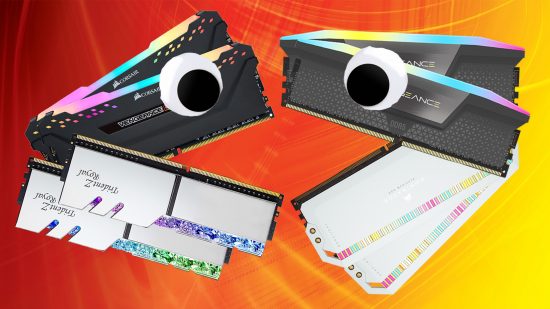Should you use DDR4 or DDR5 RAM? That’s the question we’re going to answer here. While several firms in the PC industry would love us to all be upgrading to new DDR5 RAM right now, the simple fact is that DDR4 RAM is cheaper and, from our experience so far, isn’t noticeably slower either, at least not in games and most typical tasks PC encountered by PC enthusiasts.
That’s not particularly helpful if you’re building an AMD AM5 system, where DDR5 is your only option, but Raptor Lake continues what Intel started with Alder Lake, with support for both DDR4 and DDR5 memory on the Intel 13th gen platform. Not only that, but it’s also looking increasingly likely that Intel 14th gen CPUs, such as the Core i7-14700K, will also support DDR4 and DDR5 RAM.
This gives Intel an advantage when it comes to platform cost, and there are plenty of DDR4 LGA1700 motherboards available, including models based on the latest Z790 chipset. You can find our LGA1700 motherboard recommendations in our guide to the best Z790 motherboard.
At Custom PC, we’ve been reviewing the latest PC hardware since 2003, and we’ve tested and overclocked hundreds of kits, going right back to the original DDR era. We run a number of application and gaming benchmarks to assess performance, and also test gaming performance in Far Cry 6. For more information, check out our How we test page.
Whether you want to transplant your existing DDR4 memory, or splash out on a new DDR5 kit, just so you can get the Z790 motherboard of your dreams, we’ve put together the data below to help you make that choice.
We’ve used two popular speeds of DDR5 memory, as well as a 3600MHz kit of DDR4 memory, with an Intel Core i9-13900K test CPU, to see what you can gain from using faster memory in an Intel 13th gen system, and to see if DDR5 RAM is really worth the extra cost over DDR4.
DDR4 vs DDR5 performance
Our RealBench performance tests revealed only slight drops when moving from high-speed to low-speed DDR5 RAM or, on occasion, from DDR5 to DDR4. In fact, in some situations, the DDR4 kit was a little faster than the DDR5 options, but overall, the results are within the margin of error. That’s quite remarkable considering the huge jump in frequency between DDR4 and DDR5 memory.
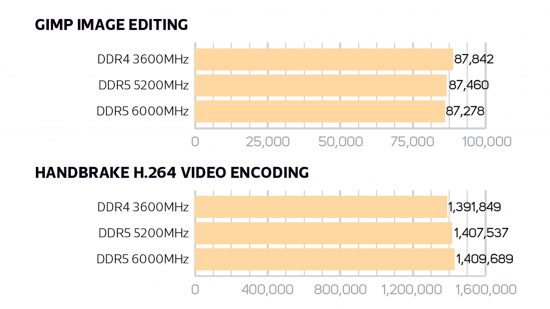
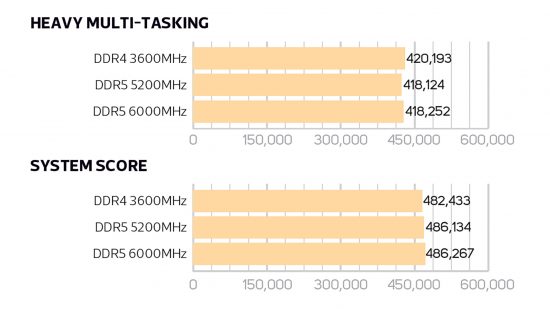
The Cinebench multi-threaded test presents a clearer case for DDR5 memory, as the DDR4 kit was slowest here, although there wasn’t much difference between the two DDR5 kits. However, the slower DDR5 kit was still behind the DDR4 kit in the single-threaded Cinebench test.
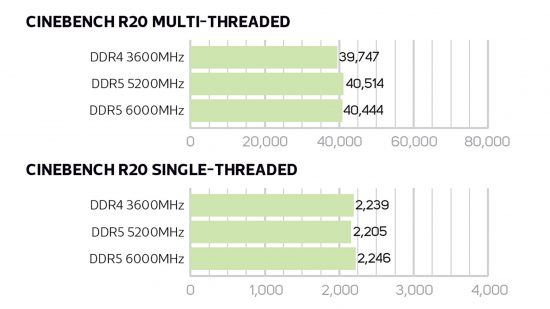
DDR4 vs DDR5 gaming performance
The differences in gaming performance were also minimal. In fact, if anything, the 3600MHz DDR4 kit was slightly quicker than the two DDR5 options, despite the huge jump in frequency. The differences are tiny, and basically within the margin of error.
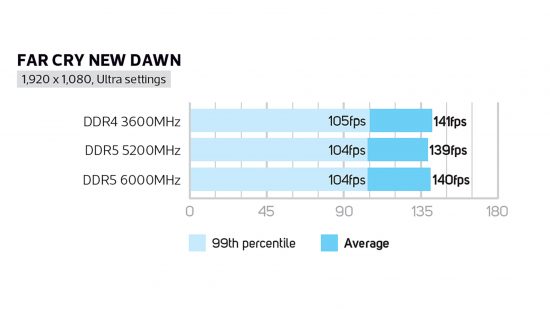
DDR4 vs DDR5 conclusion
In short, it really doesn’t matter which speed of memory you choose for a new Intel 13th-gen system, or whether you opt for DDR4 over DDR5 if you want to save yourself some cash. With Raptor Lake, at least, you should go for whatever best suits your budget and your system.
If you’re looking to upgrade your memory, or build a new Intel Raptor Lake system, check out our full guide to the best gaming memory, as well as our guide to the best gaming CPU, where we detail the very best options at a range of prices.
